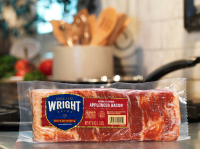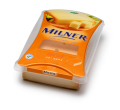Happy 35th birthday for bar code
New chief says FDA will help consumers more
DuPont honors sustainable packaging
Bacon package has clear impact
Dutch cheese tray looks good all over

by Pan Demetrakakes
Executive Editor
The economic downturn is causing consumers to move away from single-serve snack packaging toward larger packages or even unpackaged food, according to a couple of studies.
Only about 14% of American adult consumers report buying portion-controlled snacks, according to a recent survey fromMintel. Those who do said that convenience is the biggest driver, followed by weight management. The ones who don’t cited cost, too-small portions and just plain lack of interest in the concept.
This could spell trouble for the 100-calorie snack packs put out by major manufacturers like Kraft Foods, Kellogg and General Mills. According toDatamonitor, 190 new packages with the 100-calorie claim came out last year and 68 so far this year. But Datamonitor spokesperson Tom Vierhile toldBrandweekthat the trend seems to be ebbing: “This has been a big trend the last couple of years, but has dropped off this year and at this point it looks like we’re going to come in below where we were last year,” he says. In the 52-week period ending April 19, sales of Kraft’s Oreos Thin Crisps, one of the first 100-calorie products to come out, were down 30.5%, according toInformation Resources Inc.
Some consumers are turning to foods with no packaging at all. According to asurvey of grocerspublished inProgressive Grocer, bulk foods have risen 10% in sales volume over the last 12 months. Advantages include price, customized quantities, and perceptions of healthfulness, freshness and sustainability. Because many organic foods come in bulk, this trend may account for some of the continued double-digit growth in organics, at a time when overall food sales are rising only about 3% a year.
“We started adding bulk sections about five years ago,” Yvan Cournoyer, business development manager for the Texas-based HEB grocery chain, toldProgressive Grocer. “We have 275 stores in Texas, and 60 of them now have bulk departments.”
TOP DEVELOPMENTS
Happy 35th birthday for bar codeA birthday party for the UPC bar code, complete with a bar-code-shaped cake, was held yesterday at a conference in Orlando, Fla. The ninth annual U-Connect conference, held by bar code administratorGS1 US, celebrated the 35th anniversary of the bar code. The 12-digit code, which was used for the first time on a pack of gum in Troy, Ohio, on June 26, 1974, has now become nearly ubiquitous on American consumer products. The newest development in bar codes is GS1 DataBar, which can carry more information and/or be formatted onto a smaller space than a standard bar code, allowing it to be used for items like bulk produce. Supermarkets will begin processing GS1 DataBar at the beginning of next year.
New chief says FDA will help consumers more
The Salmonella outbreak in peanut butter was not a matter of a lapse in sanitation in one plant, but a “failure of the FDA to identify risk and to establish and enforce basic preventive controls,” according to the new head of the Food and Drug Administration. Writing in theNew England Journal of Medicine, FDA Commissioner Margaret Hamburg stated that the agency has placed too much emphasis on allowing new drugs and foods to enter the market, and not enough on public health. In addition to food-safety efforts “focused on prevention,” FDA should do more to educate the public about healthy eating and pay more attention to dubious health claims in ads and on packaging, Hamburg said.
DuPont honors sustainable packaging
TheDuPont Packaging Innovation Award winnerswere announced this week, with an emphasis on sustainability issues. Winning breakthroughs include: trays for Healthy Choice frozen meals from ConAgra, which use 40% post-consumer recycled plastic (supplier:Associated Packaging Technologies); and a stand-up pouch for Bertolli pasta sauce from Unilever that reduces transportation needs for incoming material by 96% (supplier:Amcor Flexibles U.S.).

NEW PACKAGES
Bacon package has clear impactA new bacon package from Tyson Foods distinguishes itself in the meat case by showing off more of the product with minimal billboard. Wright brand thick-sliced bacon is now in vacuum-shrink clear film with an off-center foil label.
“If you look at the bacon category at retail, the packaging features a lot of bright, primary colors,” says Harold Heinze, Wright brand senior director of marketing. “Wright brand’s new brand identity and packaging design significantly increases our findability on shelf; it also had the highest ratings for purchase intention.” The new package was designed by brand consultant firmInterbrand.

A tray-style package for sliced or hunk cheese from Holland uses a lid with in-mold labeling (IML) for shelf impact even when merchandised horizontally. Milner cheese from FrieslandCampina comes in an amorphous polyethylene terephthalate (APET) tray fromRPC Bebo Nederland, with IML from sister company RPC Branlage Antwerpen. The lid label has a window for product viewing, while lapping over the edge of the tray to provide horizontal billboarding. The lid fits onto the tray with an audible click at all four corners.
